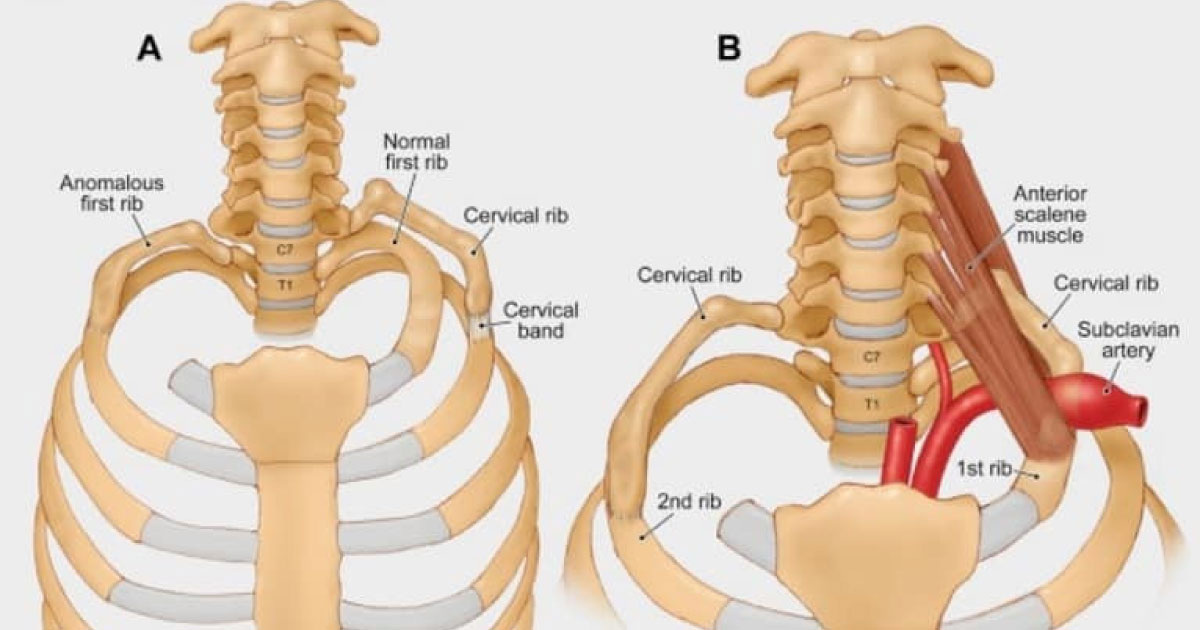Anatomy of the Brachial Plexus
The brachial plexus is a network of nerves that originates in the spinal cord, specifically from the lower cervical and upper thoracic spinal nerves (C5-T1). These nerves join together and branch out to form the peripheral nerves that supply the upper limb (arm, forearm, and hand).
The brachial plexus is divided into roots, trunks, divisions, and cords. The roots are the five spinal nerves that contribute to the plexus (C5-T1). The trunks are formed when the roots merge and are divided into three sections: upper (C5-C6), middle (C7), and lower (C8-T1). The divisions are the branches that come off the trunks and are divided into anterior and posterior divisions. Finally, the cords are formed by the combination of the anterior and posterior divisions and are named according to their position relative to the axillary artery. There are three cords: lateral (C5-C7), posterior (C5-T1), and medial (C8-T1). From the cords, the nerves of the arm arise.
Thoracic outlet syndrome (TOS) is a condition that occurs when there is compression of the nerves or blood vessels in the thoracic outlet, which is the space between the collarbone (clavicle) and the first rib. This can cause pain, numbness, tingling, weakness, or a cold sensation in the arms, hands, or fingers.
Anatomy of the Nerves Arising from the brachial plexus

The nerves arising from the brachial plexus include:
- Musculocutaneous nerve: This nerve arises from the C5-C7 nerve roots and innervates the muscles of the anterior arm and the skin of the lateral forearm.
- Axillary nerve: This nerve arises from the C5-C6 nerve roots and innervates the deltoid muscle and skin over the shoulder.
- Radial nerve: This nerve arises from the C5-T1 nerve roots and innervates the muscles of the posterior arm and forearm and the skin over the lateral aspect of the forearm and the dorsum of the hand.
- Median nerve: This nerve arises from the C5-T1 nerve roots and innervates the muscles of the anterior forearm and the thenar muscles of the hand. It also provides sensory innervation to the skin over the lateral aspect of the palm and the tips of the first three and a half fingers.
- Ulnar nerve: This nerve arises from the C8-T1 nerve roots and innervates the muscles of the hand and the skin over the medial aspect of the hand and the fifth finger.
There are three main types of TOS:
- Neurogenic TOS: This occurs when the nerves in the thoracic outlet are compressed, causing symptoms such as pain, weakness, and numbness in the arms and hands.
- Vascular TOS: This occurs when the blood vessels in the thoracic outlet are compressed, causing symptoms such as coldness, pallor, or discoloration of the fingers, and in severe cases, blood clots.
- Non-specific TOS: This type of TOS involves symptoms that are not clearly related to either nerve or vascular compression.
The causes of TOS can vary, but they often involve repetitive motions, trauma, or anatomical abnormalities that compress the nerves or blood vessels in the thoracic outlet. Treatment options for TOS may include physical therapy, medication, surgery, or a combination of these approaches, depending on the severity of the condition and the underlying cause.
The causes of TOS can vary, but they
often involve:
- Anatomical abnormalities: Some people may be born with an extra rib or an abnormality in their neck muscles, which can cause compression in the thoracic outlet.
- Trauma: A traumatic event, such as a car accident or sports injury, can cause compression in the thoracic outlet.
- Repetitive motions: Certain repetitive motions or activities, such as typing on a keyboard, playing a musical instrument, or carrying heavy bags on one shoulder, can cause compression in the thoracic outlet.
- Poor posture: Poor posture, such as slouching or rounding the shoulders, can also contribute to compression in the thoracic outlet.
- Pregnancy: During pregnancy, the growing uterus can put pressure on the thoracic outlet, leading to TOS symptoms.
- Obesity: Being overweight or obese can also increase the risk of TOS, as excess weight can put pressure on the thoracic outlet.
- Tumors: In rare cases, tumors or other growths in the neck or chest can cause compression in the thoracic outlet, leading to TOS symptoms.
It is important to note that in some cases, the underlying cause of TOS may be unknown, and the condition may be classified as non-specific TOS.
The causes of TOS can vary, but they often involve:
- Anatomical abnormalities: Some people may be born with an extra rib or an abnormality in their neck muscles, which can cause compression in the thoracic outlet.
- Trauma: A traumatic event, such as a car accident or sports injury, can cause compression in the thoracic outlet.
- Repetitive motions: Certain repetitive motions or activities, such as typing on a keyboard, playing a musical instrument, or carrying heavy bags on one shoulder, can cause compression in the thoracic outlet.
- Poor posture: Poor posture, such as slouching or rounding the shoulders, can also contribute to compression in the thoracic outlet.
- Pregnancy: During pregnancy, the growing uterus can put pressure on the thoracic outlet, leading to TOS symptoms.
- Obesity: Being overweight or obese can also increase the risk of TOS, as excess weight can put pressure on the thoracic outlet.
- Tumors: In rare cases, tumors or other growths in the neck or chest can cause compression in the thoracic outlet, leading to TOS symptoms.
It is important to note that in some cases, the underlying cause of TOS may be unknown, and the condition may be classified as non-specific TOS.
Keywords: Thoracic Outlet Syndrome, TOS, brachial plexus, nerves, anatomy, scalene muscle, cervical rib, first rib, costoclavicular syndrome, Pancoast tumor, neurofibroma, hematomas, Vascular TOS, Neurogenic TOS, Non-specific TOS, Brachial Plexus Neuralgia, treatment options, physical therapy, surgery, occupational therapy, chiropractic care, acupuncture, medications.
Dr. Mustafa Akgun
Last Revision: 10.03.2023

